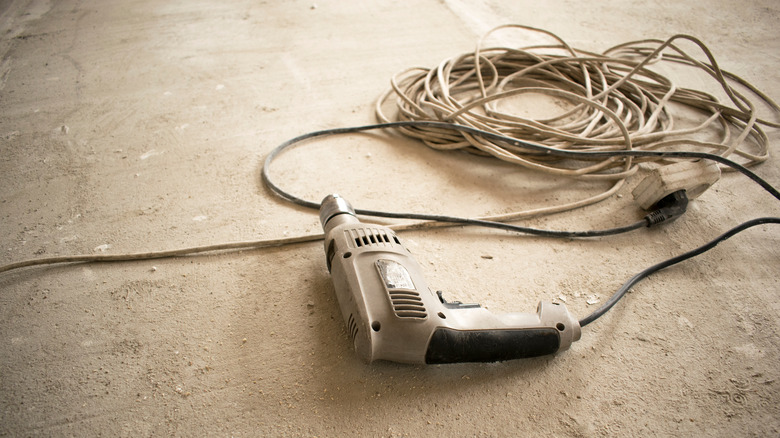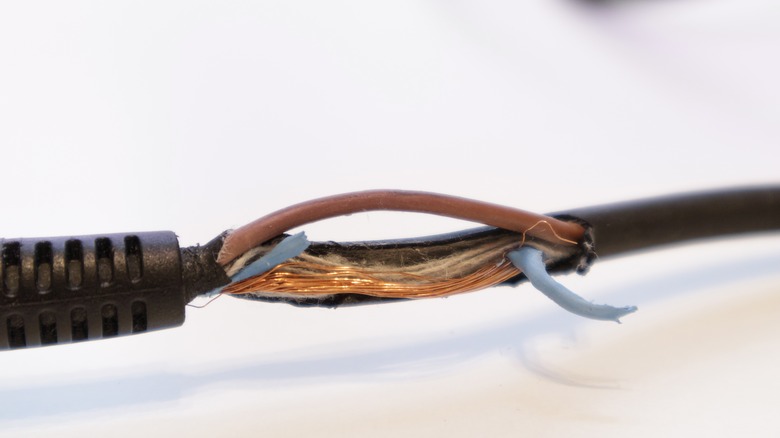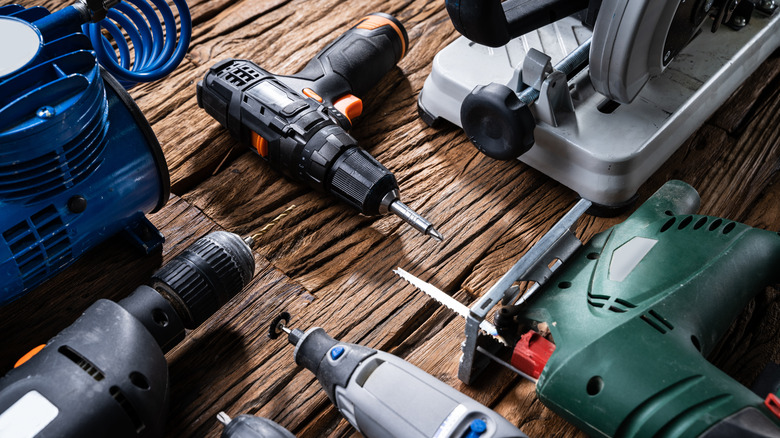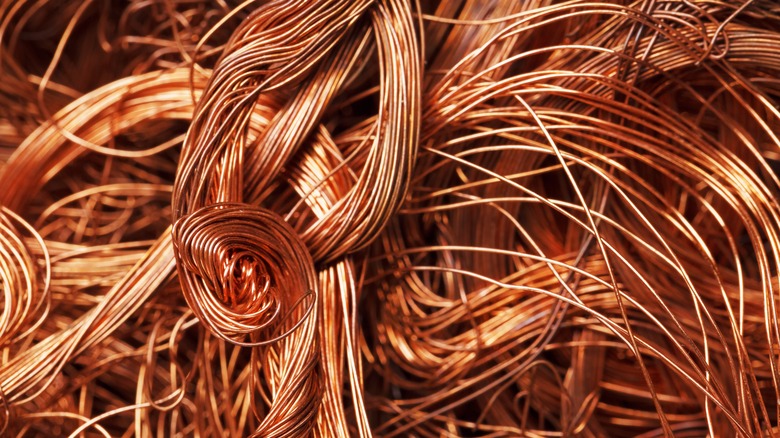Is It Safe To Use Old Power Tools?
You may believe that they don't make 'em like they used to, or the idea of crafting something with vintage power tools may just be your style. Either way, you'll likely be wondering if that old tool is safe to use. The good news is, it may well be. It might just take a bit of effort to make sure everything is as safe as it could be.
If you're hoping to save a few hundred dollars by keeping the family drill going, you've just purchased a bag of old power tools from a yard sale, or think throwing out grandpa's chainsaw would be a waste, then don't worry. If they're in good condition, or are easily repairable, then there's nothing inherently wrong with using an old power tool. However, you do want to be pretty careful. If something goes wrong with a power tool, the consequences could be severe injury or even death.
So it's important to thoroughly inspect the tool before you use it, and it may be a good idea to restrict it to light tasks and keep a close eye on it until you're confident that it can be used safely. Minor damage isn't the end of the world, either. Most power tools can be repaired or refurbished with the right know how. Obviously, the level of repair you're capable of performing depends on both the parts available and your own skill level. If you mess the repair up, or aren't sure you've completely fixed the tool, then don't risk using the tool.
There are common, and dangeroous, problems to look out for
There are several common problems to look out for when inspecting an old tool. The first and most obvious one is signs of outward damage. If the tool's case is cracked, or a piece of it is clearly damaged, or its plug is pretty beaten up, then it will probably have to be discarded. Bad damage in certain areas can lead to the tool catastrophically failing, and a crack in the tool's casing could expose moving parts or wiring that is meant to be covered. With the tool in question, the cord should also be checked for signs of wear or damage. An exposed wire or wires could lead to electrocution, or cause a short that could then turn into a fire. Power cords and plugs can be replaced if necessary, so don't risk using a tool with damaged wiring.
Triggers can be a common, and dangerous, point of failure. This can occur due to decades of grime, or because certain parts are just past their best. If the trigger doesn't operate smoothly and accurately when the tool is both off and on, then clean or replace it. The trigger is an important safety component as it controls when the tool is moving. Sometimes parts like the trigger, or casing, can be hard to find. But you may be able to buy a used version of the same tool and strip the parts you need from that. This is also a good way to find missing safety guards, which are another component you should check for before using a tool.
Some parts have a shelf life
While certain parts of a tool are designed to last a long time, others definitely have a shelf life. That's where belts, brushes, bits, and blades come in. Although a worn brush or snapped belt isn't as dire a safety issue as an exposed power cable, it is still something you want to take care of before using the tool. A tool with worn components is a bit like a blunt knife. It'll be harder to use, nowhere near as effective, and you may injure yourself trying to get it to function. Although it does somewhat depend on the tool you're refurbishing, many belts and brushes are pretty universal, and sourcing replacement parts may be both cheap and easy.
Blades and bits are pretty unique, as you can potentially refurbish them just as you're refurbishing the power tool overall. Sometimes these components will just need a clean, or they may need sharpening. You can perform the latter task yourself or have it done professionally, and it may be cheaper than buying a new blade or bit. However, chips and cracks may not be fixable, and a failure could result in bits of shrapnel being thrown from the tool at high speed. If you're not sharpening a blade or bit yourself, it may also be cheaper to just buy a new part.
Lubrication should also fall under this section. A tool needs to be lubricated if you want it to work properly, so carefully clean off any grime or grease you have access to and apply the appropriate lubricant where necessary. A dry lubricant may be best for this task, as it won't attract dirt or grime like oils and greases tend to.
You may have to dispose of it
There is a chance that your tool isn't salvageable, and in that scenario you're going to have to get rid of it. You have a few options, but none of your disposal methods should involve throwing the tool in the trash. If it's a battery-powered tool, there are likely rules against throwing batteries in with your regular refuse. Stores like Home Depot also tend to take tools in for recycling, so it makes sense to dispose of the old drill, saw, or grinder while you're there. You'll probably need to visit a hardware store to buy a new tool anyway. Home Depot may also offer a repair service if fixing the tool is beyond your capabilities, and will give you an estimate on site if repair is a possibility.
An alternative method of disposal, which may take the financial sting out of things a little, involves listing the tool on eBay, Facebook Marketplace, Craigslist, or another online sales portal. While you may not be able to salvage it, someone may be able to use it for parts or refurbish it completely and give it a new lease of life. You should be honest about the tool's condition, but you may still get a few dollars for it — even if it is completely broken.



